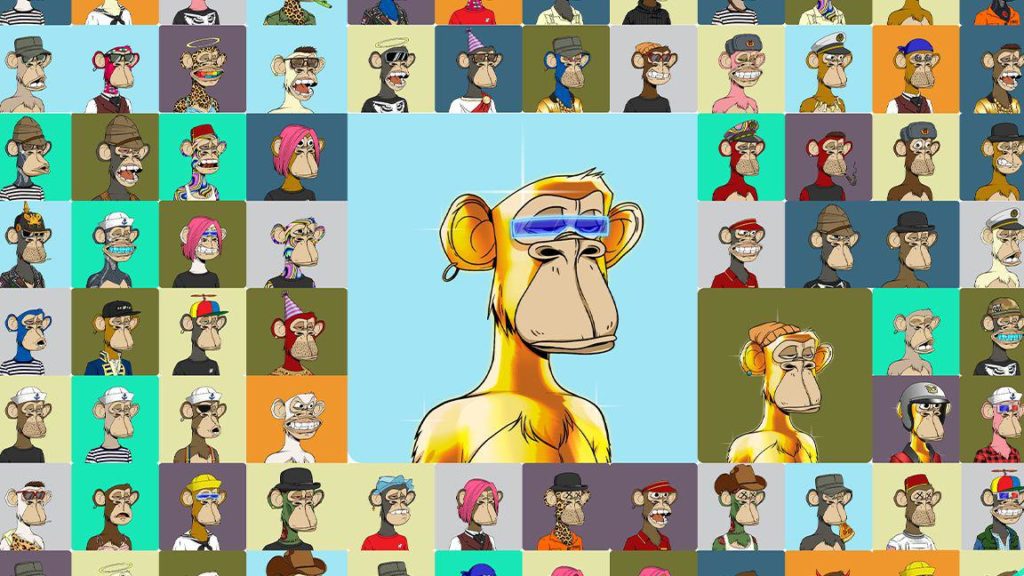What does it mean? What Does NFT Stand For?
“What is the meaning of NFT,” “what does NFT stand for,” and “how did NFT start”
are common questions in the crypto world today. NFT stands for Non-Fungible Tokens. NFTs are digital assets that enable people to prove ownership of a store of value. This can be a non-tangible item such as a virtual drawing or something physical like fine art or real estate.

NFTs are not very different from the traditional digital currencies like Bitcoin and Ethereum as they run on top of the blockchain network. The blockchain is a digital ledger where transactions are recorded. This makes it possible to transfer NFTs from one wallet to another in a secure, fast, and low-cost way. Since NFTs run on the blockchain network, they can be verified in a transparent manner.
However, the difference between NFTs and digital currencies is that every token is identified by a unique transaction hash. Hence, two NFTs cannot be the same.
This makes NFTs ideal for storing real-world value.
Cryptocurrencies like Bitcoin are fungible, meaning that if you swap 1 BTC for another 1 BTC, not much will change. You will still have 1 BTC in your crypto wallet.
With NFTs, tokens are not related to any other digital asset in circulation, hence they are referred to as non-fungible. Cryptocurrencies are fungible, and that is why they are used as a medium for commercial transactions.
NFTs are mostly used to represent items such as music, art, videos, and in-game items. They are bought and sold in NFT marketplaces just like cryptocurrencies are bought and sold on crypto exchange platforms. The NFT marketplaces can also be used to store, display, trade, and mint NFTs.
NFT History
After knowing the meaning of NFT, the next question must be, “when did NFTs start?”
The NFT origin can be traced back to 2014 when an artist named Kevin MacCoy and an entrepreneur named Anil Dash teamed up in a hackathon. They wanted to come up with a way to help artists to assert the ownership of a piece of original digital art. McCoy had learned to code and was at the time experimenting with the NameCoin blockchain.
The two came up with a way of registering a looping art video that had been created by McCoy’s wife on the blockchain. They named the solution “monetized graphics.”

In 2017, the NFT art found a new life after John Watkinson and Matt Hall created CryptoPunks. They were programmers who were interested in the programming language used in the Ethereum blockchain. They created 10,000 punk-rock-looking pixelated avatars and assigned an NFT to each. 9,000 of the CryptoPunks were put on a website to be claimed by anybody for free. They kept the remaining 1,000 for themselves. All the 9,000 CryptoPunks were claimed within 24 hours.
The original claimers started to sell their CryptoPunks in an aftermarket. Before the end of 2017, a single CryptoPunk was selling at USD$170,000.
The success of CryptoPunks inspired John Crain to create SuperRare in 2018. This was a platform for selling digital art NFTs and helping artists to make a profit from their work. Before NFTs, artists in most parts of the world could only sell their work through art galleries and get only 50% commission from their art sales. SuperRare only took 15% and artists would get 10% royalty for every digital art NFT sold, a revolutionary that was only made possible by the use of blockchain technology. Such kind of royalty sales had never existed before in the art world.
In 2019, Coldie, a SuperRare artist sold an NFT for USD$1000. This marked the first time a SuperRare NFT broke the 4-digit threshold. His fellow artists and collectors started calling him “King Coldie.”
SuperRare broke the 6-digit barrier in 2020. Matt Kane, one of its artists, sold an NFT of digital work that changed based on fluctuations in Bitcoin’s price.
In 2021, artist Pak broke the 7-digit barrier. An NFT of their digital work named The Pixel was sold for USD$1.96M. The artwork was just a single gray pixel.

One of the greatest events in NFT history was when Beeple sold his “Everydays: The First 5000 Days” digital artwork for $69M. This was the highest price ever paid for a single NFT. However, this historical record was outdone by Pak, whose NFT was sold for $91M. This was a collection that had thousands of pieces that had been minted by thousands of collectors.
Although the NFT origin can be traced back to 2014, NFTs are gaining popularity now because they have become a common way of buying and selling digital work. In 2021, the global NFT market was worth $41 billion, an amount that is almost equal to the total value of the global fine art market.
